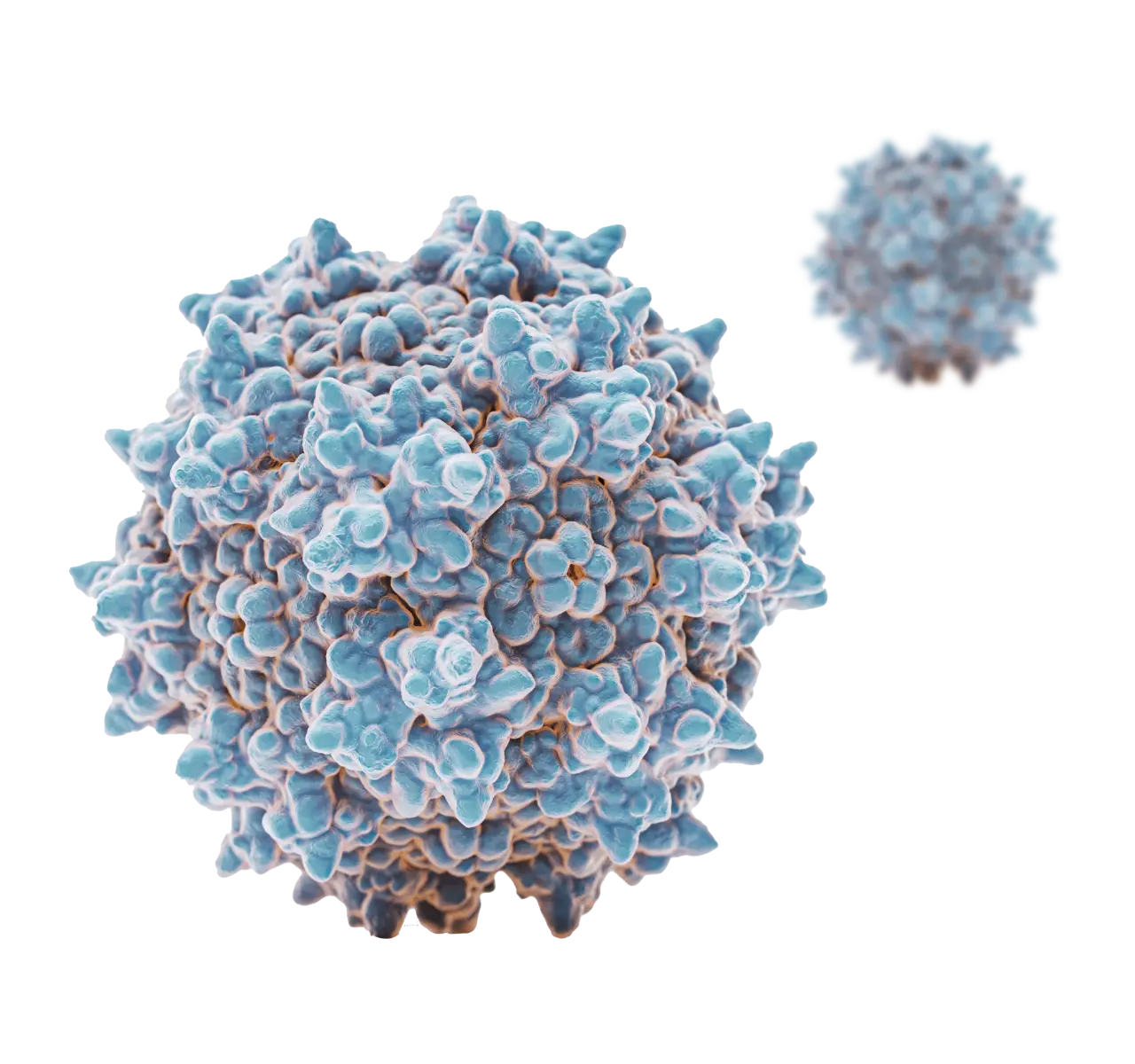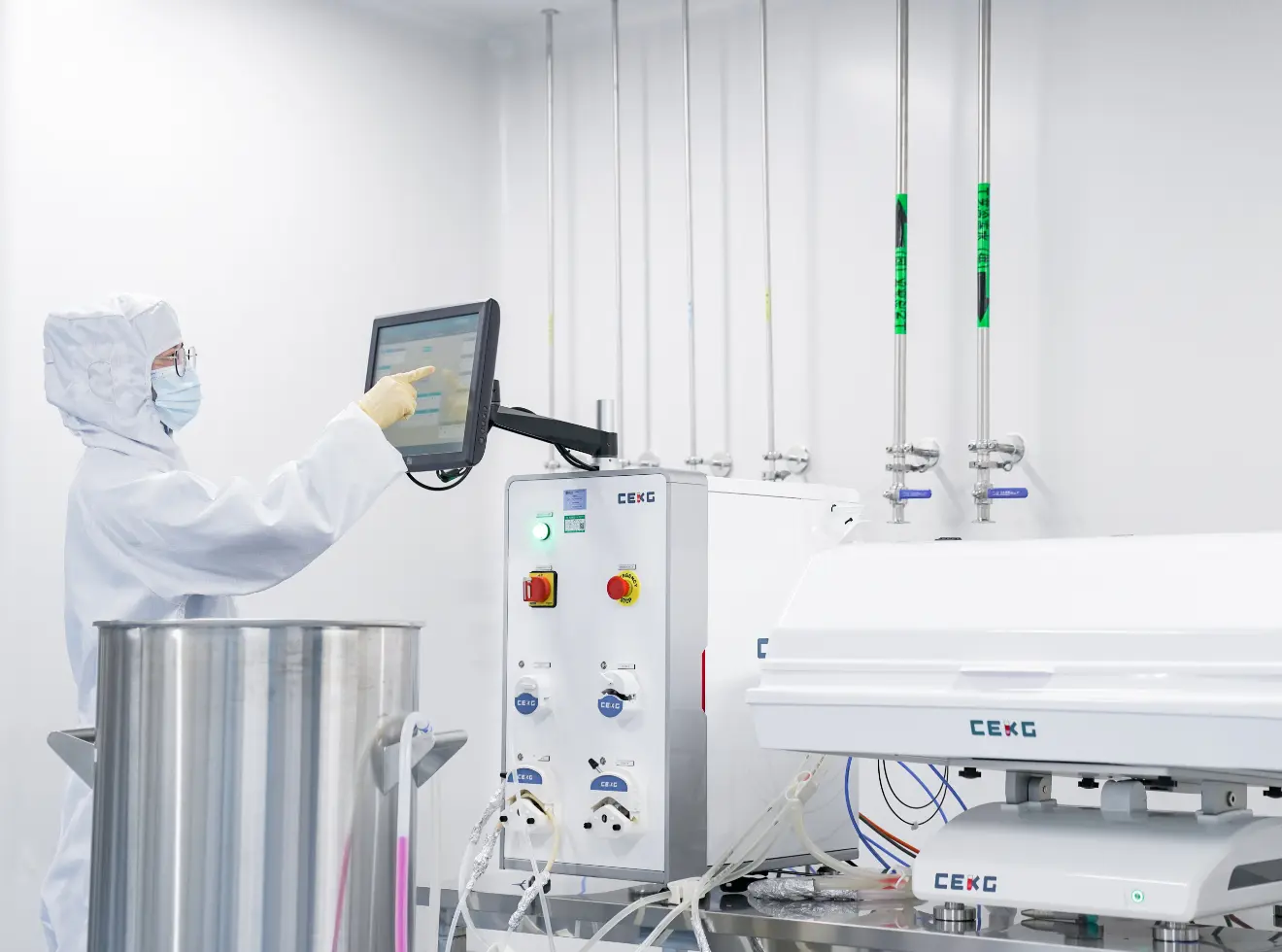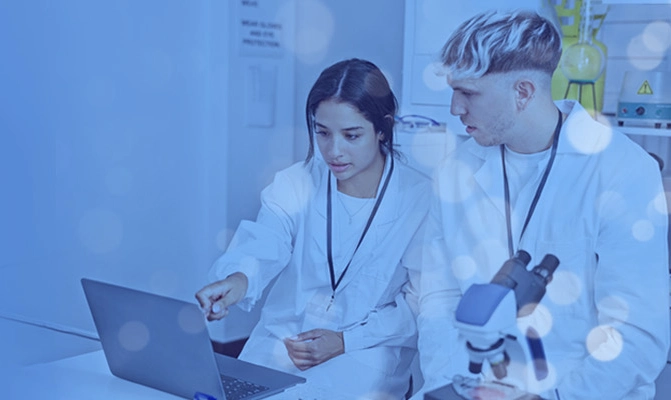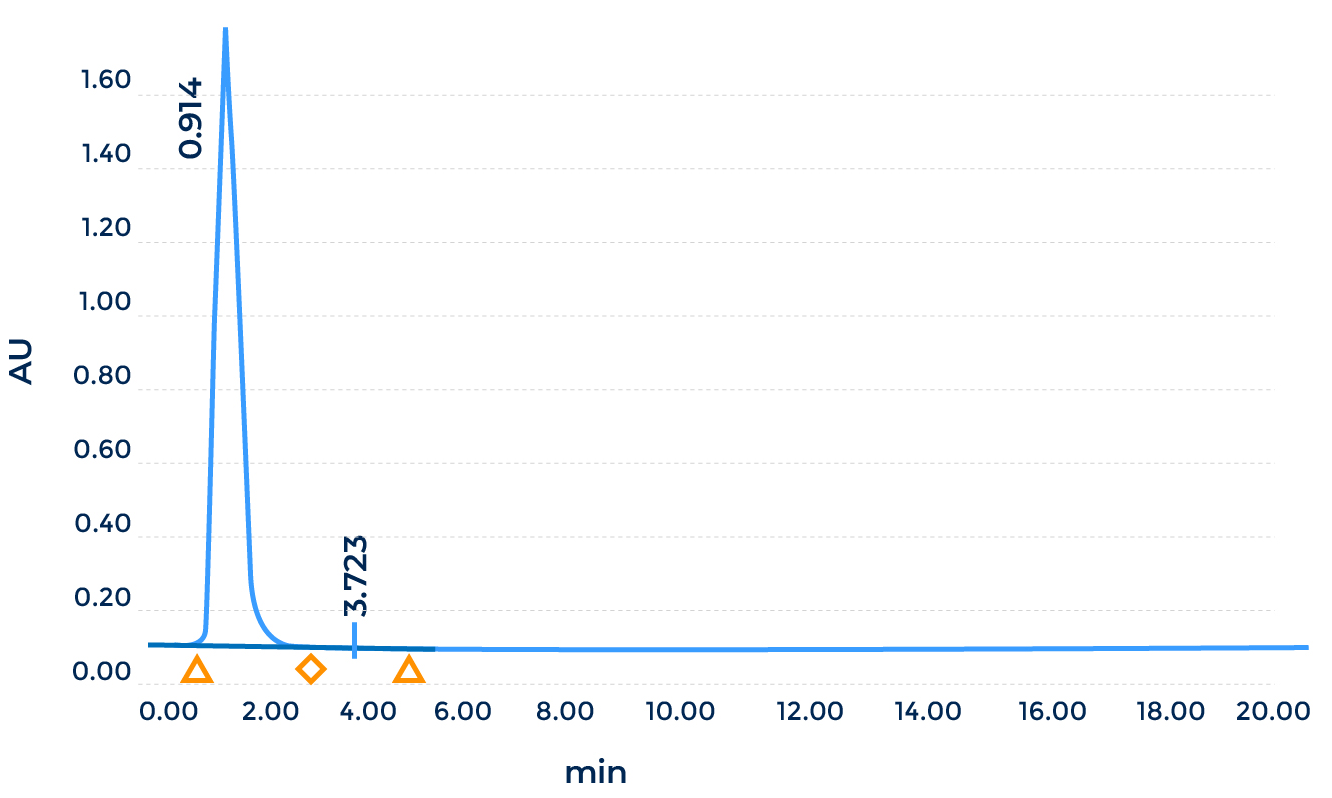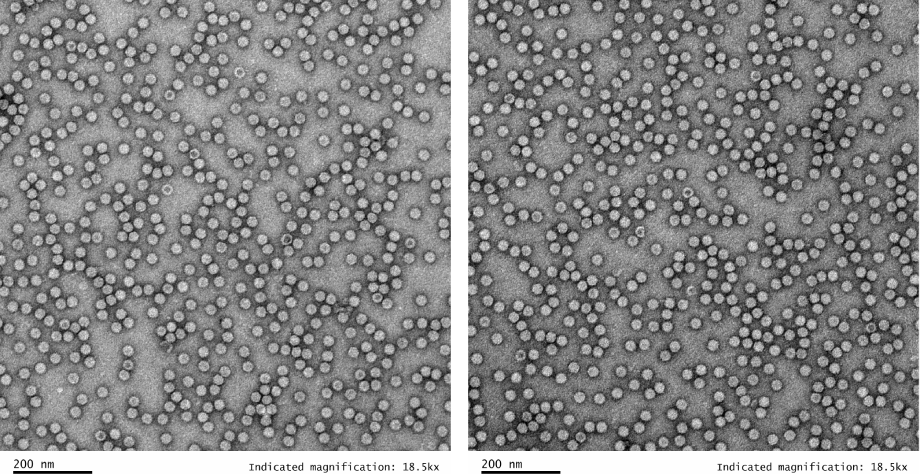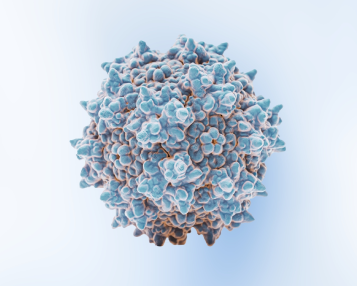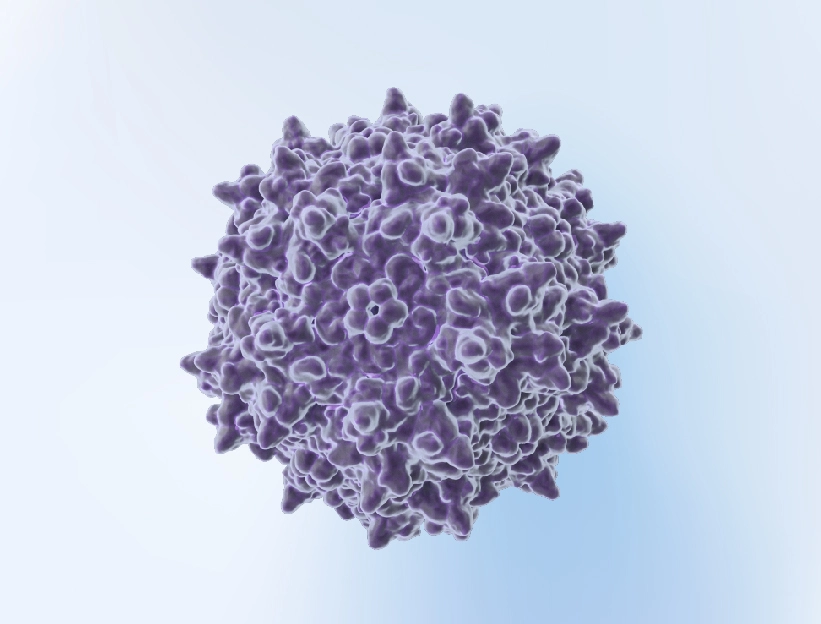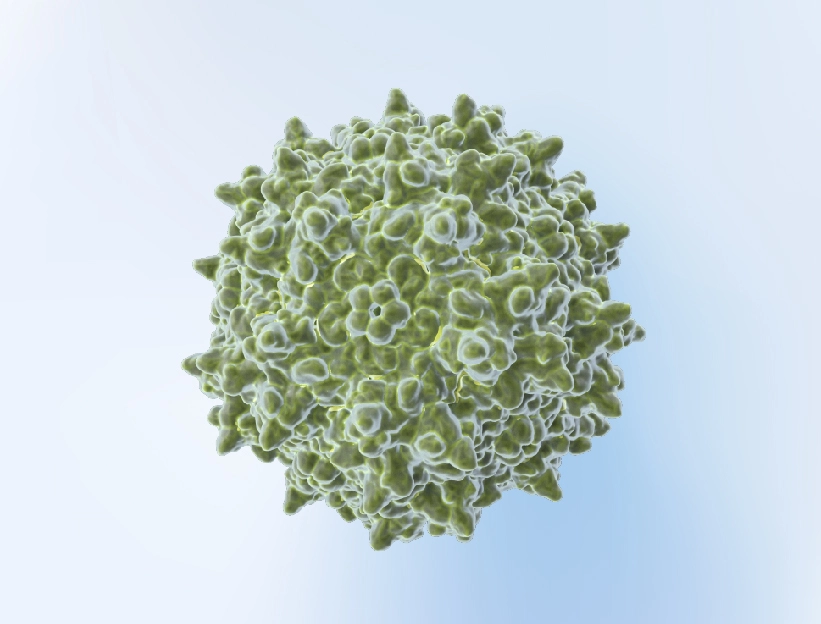Key Benefits
-
Fast Turnaround
12-15 business days for AAV 5E+13GC -
Guaranteed Titer
≥1E+13GC/mL (qPCR genome copies/ml) -
High Purity
analyzied by SDS-PAGE -
High Yield
up to 1E+16 GC -
Low Endotoxin
<10EU/ml, suitable for in vivo experiments -
Low Empty Shell
<30% -
Multiple Serotypes
70+ different serotype options available -
Extensive Experience
Successfully delivered over 10,000 custom AAV projects -
Experienced Technical Support
PhD-level team with years of AAV experience
Service Details
Price and Turnaround
*The indicated titers are guaranteed except when the insert exceeds the packaging capacity (4.7 kb) or if you choose to provide us with your own modified rep/cap plasmid or helper plasmid.
| AAV Packaging Serotypes | Guarantoed Yield (GC)* | Lead Time (Business Days) |
|---|---|---|
| Normal-yield AAV Serotypes | 2E+12 GC | 12-15 Days |
| 5E+12 GC | ||
| 1E+13 GC | ||
| 2E+13 GC | ||
| 5E+13 GC | ||
| 1E+14 GC | ||
| 2E+14 GC | 18-24 Days | |
| 5E+14 GC | ||
| 1E+15 GC | 30-45 Days | |
| 2E+15 GC | ||
| Low-yield AAV Serotypes (AAV4, 6, etc.) | 2E+12 GC | 12-15 Days |
| 5E+12 GC | ||
| 1E+13 GC | ||
| 2E+13 GC | ||
| 5E+13 GC | ||
| 1E+14 GC | 18-24 Days | |
| 2E+14 GC | ||
| 4E+14 GC |
- GC = Genome copies.
- For these extremely low-yield AAV serotypes without production data, we are not able to guarantee the final yield or titer specified here.
- If you would like to use any AAV serotypes that are currently under patent, and your application is for commercial use, we advise that you contact the patent owner to obtain authorization beforehand.
Storage Requirements:
- Store the virus at -80°C, and place it on ice during operation.
- Calculate your expected usage in advance and PackGene will aliquot your virus according to your pre-determined requirements. This can help avoid unnecessary thawing and re-freezing after receiving your AAVs since freeze thaw cycles influence virus viability. If aliquoting is required, it is recommended to use PCR tubes with siliconized inner walls, or special virus preservation tubes with low protein binding rates.
- Thaw your virus aliquots in an ice bath immediately before use.
- Dilute with PBS or PBS / 0.001% F-68 if needed.
Quality Control
A variety of AAV-based QC assays have been developed by PackGene’s experienced QC team. QC tests are aimed at verification of the identity, purity, and potency of AAV viral particles for both in vitro and in vivo studies. AAV genome copies are quantified via SYBR qPCR with ATCC’s Reference AAV for titer calibration. Purity is determined by Coomassie-Blue staining.
We guarantee the endotoxin level of the AAV particles lower than 10 EU/ml. We also offer additional QC tests including ddPCR , TEM, TCID50 tittering and other QC services. Please check AAV Analytical Services to learn more.
| Category | QC Assays | QC Standard |
|---|---|---|
| Identity | Identity – GOI Sequence | Additional QC |
| Purity | SDS-PAGE Coomassie Blue Staining | Free QC |
| TEM | Additional QC | |
| AUC | Additional QC | |
| Potency & Content | qPCR | Free QC |
| ddPCR | Additional QC | |
| TCID50 | Additional QC | |
| Capsid Titer-ELISA | Additional QC | |
| Impurity | Endotoxin Test | Free QC |
| Mycoplasma Detection | Additional QC | |
| Sterility Test | Additional QC | |
| Residual Plasmid Test | Additional QC |
Performance
-
Standard QC
- Restriction digestion analysis using multiple endonuclease to verify the plasmids to be used for AAV packaging.
- AAV Titering by qPCR (SYBR Green with standard curve for quantification)
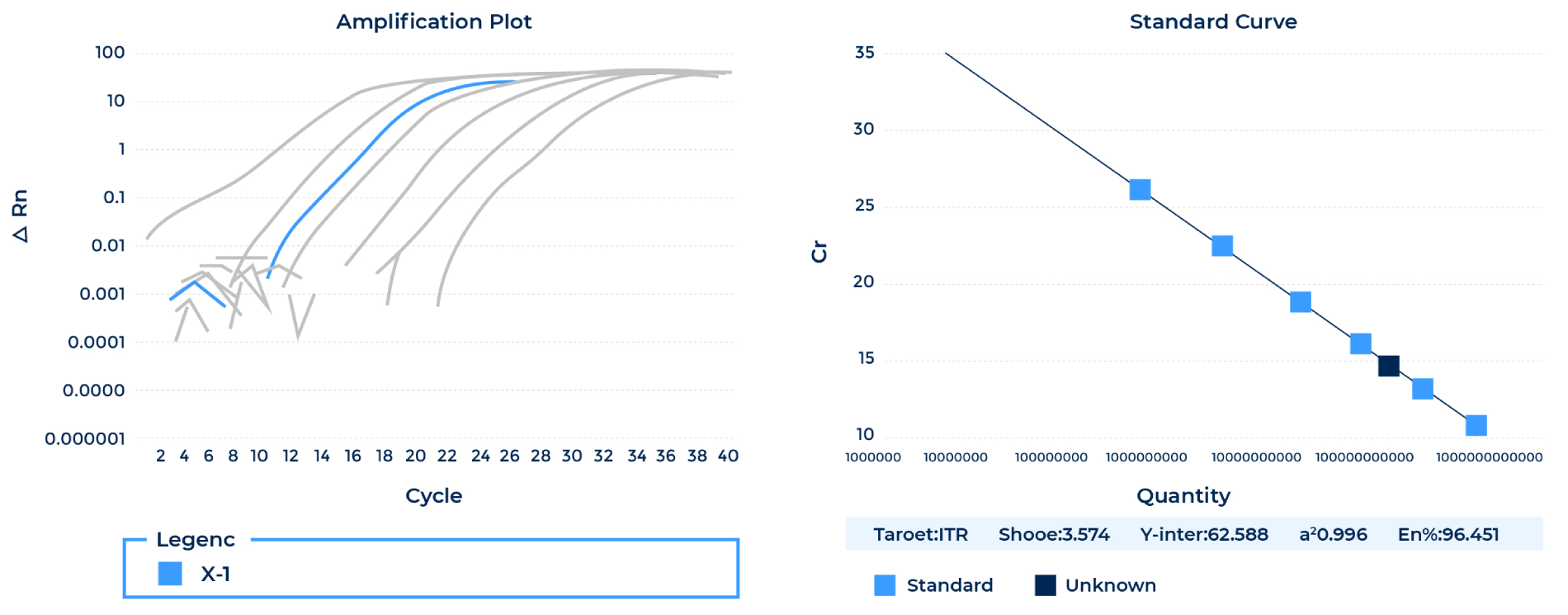
Note: ATCC VR-1816™ was used as the standards for AAV qPCR titering.- Endotoxin Test by LAL assay
- AAV purity analysis by SDS-PAGE and Coomassie Staining (silver staining available upon request)
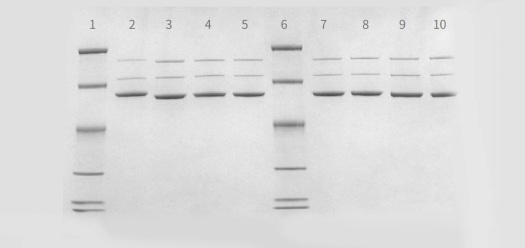
Legend: Lanes 2-5 and 7-1: AAV samples produced at PackGene. Lane 1,6: Marker -
Other Available Analytical Tests


